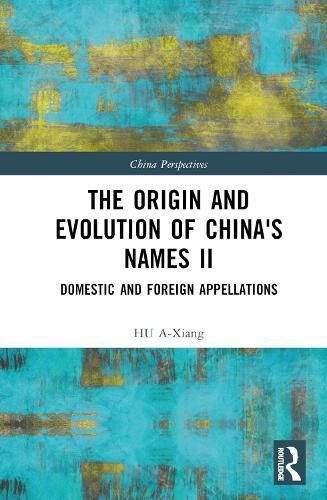Readings Newsletter
Become a Readings Member to make your shopping experience even easier.
Sign in or sign up for free!
You’re not far away from qualifying for FREE standard shipping within Australia
You’ve qualified for FREE standard shipping within Australia
The cart is loading…






This is the second volume of a two-volume set on the names of China, focusing on the domestic and foreign names of the country in ancient and modern times.
Using interdisciplinary approaches from fields such as history, geography, ethnic studies, linguistics, psychology and toponymy, this two-volume set examines the origin and evolution of China's names over more than 4,000 years of history. The second volume is divided into two parts. The first part explains the habitual self-names for China, which remain unaffected by political regime changes. The author explores the complex reasons for the emergence and evolution of indigenous names such as Zhongguo, Zhonghua, Jiuzhou and Sihai. The second part discusses the names of China in foreign languages. It looks at the origin, development, use and popularity of foreign names of China such as China, Serice, Taugas, Cathay and those associated with Han, Tang, the dragon and the lion.
This book will appeal to both academic and general readers interested in Chinese history, Chinese historical geography and Chinese toponymy.
$9.00 standard shipping within Australia
FREE standard shipping within Australia for orders over $100.00
Express & International shipping calculated at checkout
This is the second volume of a two-volume set on the names of China, focusing on the domestic and foreign names of the country in ancient and modern times.
Using interdisciplinary approaches from fields such as history, geography, ethnic studies, linguistics, psychology and toponymy, this two-volume set examines the origin and evolution of China's names over more than 4,000 years of history. The second volume is divided into two parts. The first part explains the habitual self-names for China, which remain unaffected by political regime changes. The author explores the complex reasons for the emergence and evolution of indigenous names such as Zhongguo, Zhonghua, Jiuzhou and Sihai. The second part discusses the names of China in foreign languages. It looks at the origin, development, use and popularity of foreign names of China such as China, Serice, Taugas, Cathay and those associated with Han, Tang, the dragon and the lion.
This book will appeal to both academic and general readers interested in Chinese history, Chinese historical geography and Chinese toponymy.